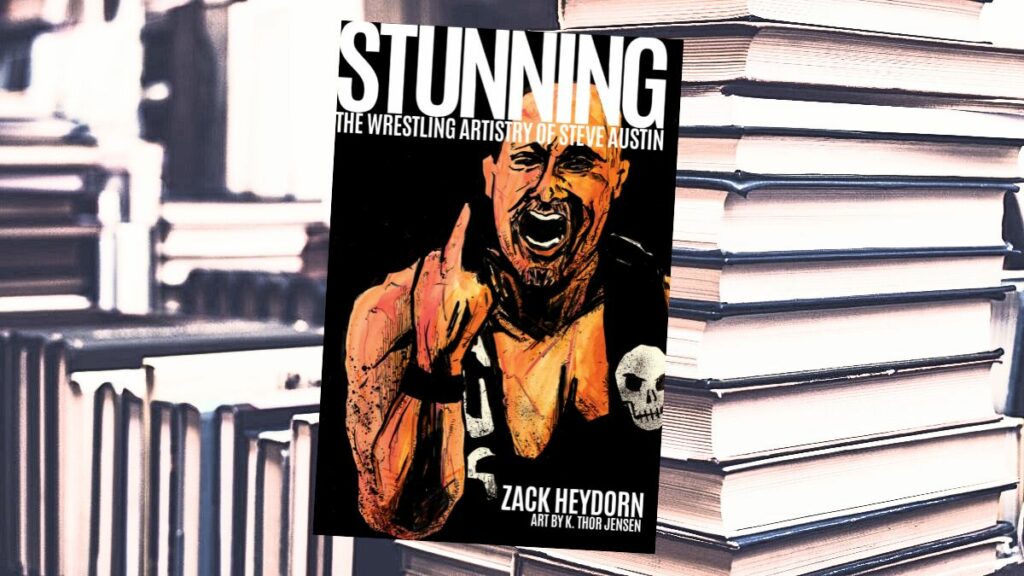Wresting and Art are not two words that you normally find co-existing in the same sentence. Often when we talk about wrestling, we focus on the physical, the athleticism and the larger-than-life characters and how well they speak on the mic. Art is – well, it’s something that lives outside of a wrestling ring, not pile-driving through one. Right?
Not if Zack Heydorn has anything to say about it.
Heydorn’s recently-released book, Stunning: The Wrestling Artistry of Steve Austin, not only disagrees with that assessment but attempts to answer through analyzing the intrepid career of Steve Austin himself.
I am inclined to agree with Heydorn’s assessment: that the entirety of a wrestler’s career, if long enough, can be considered art. As he sets up in his introduction, the best art evokes emotion, passion and opinion which watching a wrestling match certainly does. Wrestling is different from traditional sporting events as the outcomes are pre-determined, and it is an athletic form that not only survives but thrives because it is reliant on storytelling. Watching how wrestlers reach that pre-determined outcome by using artistry like speech, character and, of course, movement are facets of what propels some wrestlers to greatness and leave others as faded memories. Whether we watch in person, on television or via YouTube clips, if everyone is doing their job, the story will not only be clear but thrilling.
Heydorn’s book, published by Hybrid Shoot, is in many ways a fascinating experiment, to look in-depth at a wrestler’s career and analyze them not only from a broader wrestling storytelling point of view, but from an artistic one as well. The book is organized neatly, split into chapters that contain an in-depth look at matches from specific eras of Austin’s career, with some great comic-like illustrations by K. Thorn Jensen interspersed throughout. Heydorn writes in-depth descriptions of matches through various eras of Austin’s life. From his origins with Chris Adams to his infamous feud with Dwayne “The Rock” Johnson, we follow not only the career of Stone Cold, but various rises, falters and eventual shot to stardom.
While Heydorn focuses on describing the matches, he also couches them within the context of Austin’s career, and attempts to bring us into the action of each match often by describing them in the present tense. However, because he is also providing us with analysis, his prose sometimes take a step back into the past. These shifts in tense from present to past to present again often left me feeling discombobulated and I craved a little more consistency in the analysis of these chapters.
As fascinating as the concept is – and it is a fascinating one – I found the book became redundant the longer it went on. Though every match is different, there were too many of them that appeared to contain stark comparisons with Heydorn drawing similar, if not the same, conclusions from each. This made for a slow if not plodding read the longer the book went on.
If art is personal, and it certainly is for Heydorn, then I wished we spent a little more time understanding his personal connection to Austin and these matches.
Still, Heydorn’s passion and reverence for Steve Austin is clear and contagious. I recommend this read for fans of the titular wrestler and for anyone who has ever wondered if wrestling can be considered art. Heydorn makes a great case for why and how it is.
RELATED LINKS
- Stone Cold Steve Austin story archive
- Order Stunning: The Wrestling Artistry of Steve Austin at Amazon.com or Amazon.ca
- SlamWrestling Master Book List

